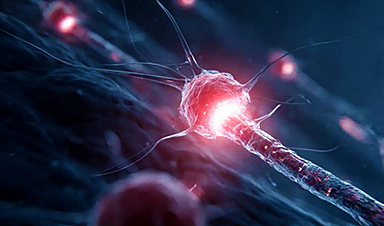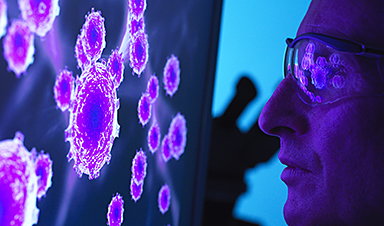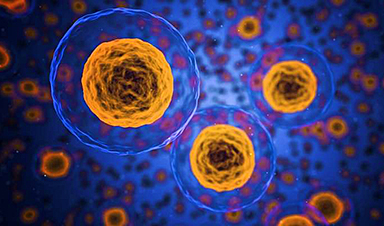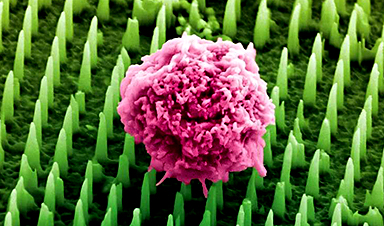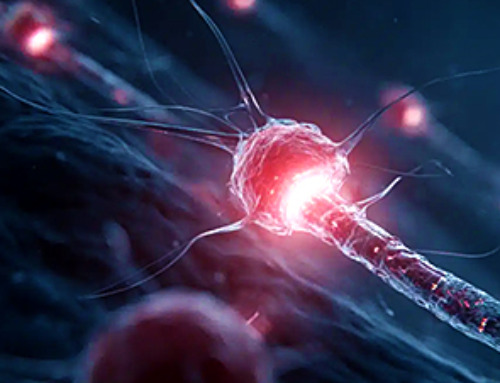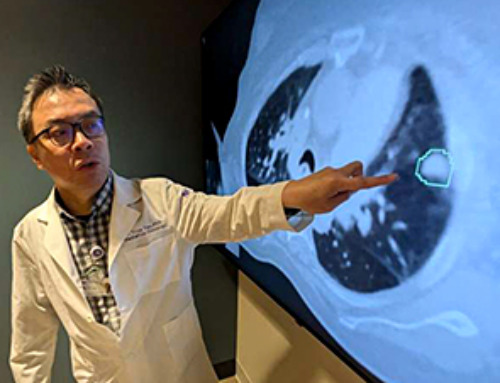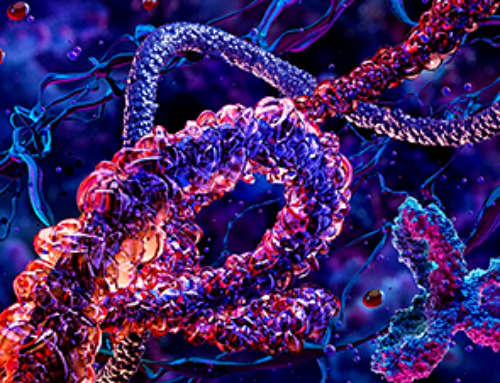Conventional cancer therapies risk causing damage to healthy tissue while working to destroy cancer cells. Researchers are developing novel therapeutics based on nanotechnology to overcome this limitation, as well as to improve the pharmacokinetics of a pharmaceutical and reduce the related toxicities (Nat Rev Drug Discov 2021; https://doi.org/10.1038/s41573-020-0090-8).
Another encouraging area of nanotechnology in oncology is its use in enhancing immunotherapy (Nanoscale 2019; doi: 10.1039/c9nr05371a). T cells are important fighters in an immune response, and T cell-based immunotherapy of cancer is a rapidly developing field. While immunotherapy has already been established as an exciting and potentially highly effective treatment option for various types of cancer, one important challenge remains—stimulate antitumor immunity of primary T cells in vivo.
To tackle this issue, scientists at Ohio State University developed nanotechnology to boost activation of T cells at the cancer tumor site in a way that improved their interactions with an antibody therapy undergoing clinical trial testing. The study, which was conducted in mouse models of cancer, was published in the journal Nature Communications (2021; https://doi.org/10.1038/s41467-021-27434-x).
The research was led by the Dong lab, which has long focused on nanoparticle delivery of messenger RNA (mRNA) as a therapeutic strategy. In the current study, the team hypothesized that delivery of costimulatory receptor mRNA to tumor-infiltrating T cells would enhance the antitumor effects of antibodies while lowering the chances for whole-body side effects.
To explore nanoparticles for delivering mRNA into T cells, the investigators designed and synthesized a library of phospholipid and glycolipid derivatives (PLs and GLs) and used these materials to devise biomimetic nanoparticles for mRNA delivery. The team chose to utilize the phospholipid-derived nanoparticle, PL1, to deliver the costimulatory receptor mRNA.
Next, the researchers loaded the nanoparticle cargo: (mRNA) carrying instructions to produce molecules that T cells express as part of their immune system function. The researchers injected these nanoparticles directly into the tumor site in mouse models of specific cancers, which entered tumor-infiltrating T cells to generate and amplify specific receptors on their surfaces enabling additional functions, including proliferation, recruitment of other immune cells, and production of helpful proteins.
The team waited 6 hours until the cells produced enough receptors and then injected antibodies into the tumors. The combination of PL1-OX40 mRNA and anti-OX40 antibody demonstrated significantly improved antitumor activity compared to anti-OX40 antibody alone in multiple tumor models. Tests of the combined treatment regimen produced the best results in mouse models of melanoma and B-cell lymphoma. Experimental monoclonal antibodies delivered 6 hours later could then bind to those receptors on T cells which triggered their cancer cell-killing functions. The nanoparticle and antibody delivery eliminated tumors in 60 percent of the mice—a significantly better outcome than treatment with the antibody alone. Moreover, the immune response enhancement had a lasting effect: lymphoma cells injected later into the treated tumor-free mice were unable to survive long enough to form tumors.
The new nanotechnology was effective in melanoma as well. When the team supplemented the combination treatment with the two additional antibodies that disrupt cancer cells’ ability to block the immune response, the approach resulted in a 50 percent complete response in the mice and protection against a later tumor rechallenge.
Oncology Times reached out to senior author, Yizhou Dong, PhD, for additional insights into their study. Dong is Associate Professor in the Division of Pharmaceutics and Pharmacology of the College of Pharmacy at The Ohio State University. His research focuses on the design and development of biotechnology platforms for the treatment of genetic disorders, infectious diseases, and cancers.
Oncology Times: A great number of nanoformulations have been reported as drug delivery systems to be applied in cancer treatment. What was the rationale for the design of this system?
Dong: “Phospholipids and glycolipids are natural components of the cell membrane. Taking advantage of this unique characteristic of these two types of lipids, we designed a library of phospholipid and glycolipid biomimetic materials (PL and GL lipids) to improve mRNA delivery. These PL and GL lipids are composed of a biomimetic head (phosphate head or glyco head), an ionizable amino core, and multiple hydrophobic tails. Their ionizable property makes them neutral at physiological pH and becomes positively charged at low pH.”
Oncology Times: What were some of the factors which posed challenges in the development of the nanoparticle delivery system of messenger RNA? What strategies were employed to surmount these challenges?
Dong: “Effective and safe delivery of mRNA remains the key challenge for clinical translation of nanoparticle formulations. We mimic nature using chemical structures such as phospholipid, glycolipid, and many other molecules from mammalian cells. By systematic exploration and optimization of the formulations, we can match delivery systems with therapeutic indications.”
Oncology Times: What are the potential clinical implications of the findings of this study?
Dong: “In this work, we developed a phospholipid-derived nanoparticle to deliver OX40 or CD137 mRNA to T cells in the tumor microenvironment, which enhances the efficacy of agonistic antibody therapy in preclinical tumor models. This treatment strategy is compatible with multiple administration routes and works in synergy with checkpoint inhibitors, demonstrating the broad applicability of this treatment regimen under diverse therapeutic situations. Additionally, the results lay a solid foundation for the exploration of more effective combinations using costimulatory receptors and agonistic antibodies for cancer immunotherapy.”
Oncology Times: Nanotechnology targets cancer cells more exactly to spare healthy tissues. Are there any possible side effects of nanotechnology for cancer?
Dong: “Many strategies have been investigated to improve the targeting efficiency of cancer cells. Different from direct targeting cancer cells, we aim to modulate T cells in the tumor microenvironment using nanoparticles delivering mRNA encoding costimulatory receptors in combination with the corresponding agonistic antibody as a strategy to enhance cancer immunotherapy.”
News
Drug-Coated Neural Implants Reduce Immune Rejection
Summary: A new study shows that coating neural prosthetic implants with the anti-inflammatory drug dexamethasone helps reduce the body’s immune response and scar tissue formation. This strategy enhances the long-term performance and stability of electrodes [...]
Scientists discover cancer-fighting bacteria that ‘soak up’ forever chemicals in the body
A family of healthy bacteria may help 'soak up' toxic forever chemicals in the body, warding off their cancerous effects. Forever chemicals, also known as PFAS (per- and polyfluoroalkyl substances), are toxic chemicals that [...]
Johns Hopkins Researchers Uncover a New Way To Kill Cancer Cells
A new study reveals that blocking ribosomal RNA production rewires cancer cell behavior and could help treat genetically unstable tumors. Researchers at the Johns Hopkins Kimmel Cancer Center and the Department of Radiation Oncology and Molecular [...]
AI matches doctors in mapping lung tumors for radiation therapy
In radiation therapy, precision can save lives. Oncologists must carefully map the size and location of a tumor before delivering high-dose radiation to destroy cancer cells while sparing healthy tissue. But this process, called [...]
Scientists Finally “See” Key Protein That Controls Inflammation
Researchers used advanced microscopy to uncover important protein structures. For the first time, two important protein structures in the human body are being visualized, thanks in part to cutting-edge technology at the University of [...]
AI tool detects 9 types of dementia from a single brain scan
Mayo Clinic researchers have developed a new artificial intelligence (AI) tool that helps clinicians identify brain activity patterns linked to nine types of dementia, including Alzheimer's disease, using a single, widely available scan—a transformative [...]
Is plastic packaging putting more than just food on your plate?
New research reveals that common food packaging and utensils can shed microscopic plastics into our food, prompting urgent calls for stricter testing and updated regulations to protect public health. Beyond microplastics: The analysis intentionally [...]
Aging Spreads Through the Bloodstream
Summary: New research reveals that aging isn’t just a local cellular process—it can spread throughout the body via the bloodstream. A redox-sensitive protein called ReHMGB1, secreted by senescent cells, was found to trigger aging features [...]
AI and nanomedicine find rare biomarkers for prostrate cancer and atherosclerosis
Imagine a stadium packed with 75,000 fans, all wearing green and white jerseys—except one person in a solid green shirt. Finding that person would be tough. That's how hard it is for scientists to [...]
Are Pesticides Breeding the Next Pandemic? Experts Warn of Fungal Superbugs
Fungicides used in agriculture have been linked to an increase in resistance to antifungal drugs in both humans and animals. Fungal infections are on the rise, and two UC Davis infectious disease experts, Dr. George Thompson [...]
Scientists Crack the 500-Million-Year-Old Code That Controls Your Immune System
A collaborative team from Penn Medicine and Penn Engineering has uncovered the mathematical principles behind a 500-million-year-old protein network that determines whether foreign materials are recognized as friend or foe. How does your body [...]
Team discovers how tiny parts of cells stay organized, new insights for blocking cancer growth
A team of international researchers led by scientists at City of Hope provides the most thorough account yet of an elusive target for cancer treatment. Published in Science Advances, the study suggests a complex signaling [...]
Nanomaterials in Ophthalmology: A Review
Eye diseases are becoming more common. In 2020, over 250 million people had mild vision problems, and 295 million experienced moderate to severe ocular conditions. In response, researchers are turning to nanotechnology and nanomaterials—tools that are transforming [...]
Natural Plant Extract Removes up to 90% of Microplastics From Water
Researchers found that natural polymers derived from okra and fenugreek are highly effective at removing microplastics from water. The same sticky substances that make okra slimy and give fenugreek its gel-like texture could help [...]
Instant coffee may damage your eyes, genetic study finds
A new genetic study shows that just one extra cup of instant coffee a day could significantly increase your risk of developing dry AMD, shedding fresh light on how our daily beverage choices may [...]
Nanoneedle patch offers painless alternative to traditional cancer biopsies
A patch containing tens of millions of microscopic nanoneedles could soon replace traditional biopsies, scientists have found. The patch offers a painless and less invasive alternative for millions of patients worldwide who undergo biopsies [...]

